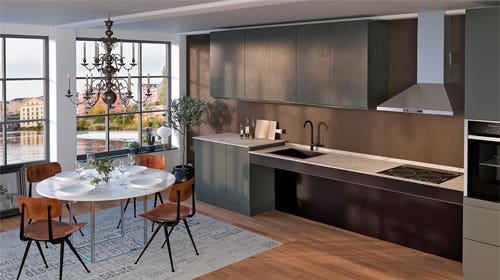MFA Boston opens Art of Americas
The new Art of Americas Wing at the Museum of Fine Arts Boston opened Nov. 20 after 10 years of planning and building. It includes 53 new galleries that contain…
The new Art of Americas Wing at the Museum of Fine Arts Boston opened Nov. 20 after 10 years of planning and building. It includes 53 new galleries that contain more than 5,000 works of art over an area of more than 133,000 sq. ft.
{loadposition position10}
The new wing has four floors of galleries. The lower level features Ancient American, Native American, 17th century and maritime art. The first level highlights 18th century art of the Colonial Americas and early 19th century art. The second level focuses on 19th century and early 20th century art and the third level showcases 20th century art through the mid-1970s.
"The first American Wing team I was on was started around 1996 and the idea of the wing goes back to the '70s, actually," says Gary Ward, curator of the Arts of America Furniture Department. "It finally came to fruition, which I would attribute to some miraculous fundraising on the part of our director. The collection had grown and the time had come and the resources became available and that is what really made it happen."
The original Museum of Fine Arts opened its doors to the public on July 4, 1876, the nation's centennial. Built in Copley Square, the museum was then home to 5,600 works of art. During the next several years, the collection and number of visitors grew exponentially and in 1909 the museum moved to its current home on Huntington Avenue.
Today the museum is one of the most comprehensive art museums in the world; the collection encompasses nearly 450,000 works of art. It has welcomed more than 1 million visitors each year to experience art ranging from ancient Egyptian to contemporary, special exhibitions and innovative educational programs.
Designed by the world-renowned Foster and Partners architects, the new Museum of Fine Arts comprises a new wing for Art of the Americas; renovated art of Europe galleries; improved conservation and education facilities; the Linde Family Wing devoted entirely to contemporary art; and a new, larger public space called the Ruth and Carl J. Shapiro Family Courtyard.
Much of the furniture is displayed in period rooms that date back to the beginning of the 18th century.
"The period rooms start at about 1700 and go up to about 1840," explains Ward. "In the old East Room, we had about 14 period rooms roughly from 1700 to 1800 and, in the initial planning in the '90s, we decided to keep the best of those. We eliminated a few that were redundant in terms of their style or had been compromised in their installation in the '20s or were not of very great quality. So we kept the very best ones and then we were able to install two rooms from 1840 that we acquired in the '70s, but were never able to display.
"We have a gallery devoted to our Rhode Island furniture collection, which is not huge, but has 12 to 15 things in it - all of great quality. There are our Oak Hill period rooms where we have a gallery devoted to Paul Revere's neoclassical silver and furniture by John and Thomas Seymour. The Newport Gallery is nice. It's next to the gallery devoted to the paintings of John Singleton Copley, of which we have a large collection. We wanted to show the best Colonial New England portrait paintings next to what you could say is the best Colonial New England furniture."
Elsewhere
"Chairevolution! 300 Years of Designing the Chair," an exhibition that continues through Feb. 6 at the Minneapolis Institute of Arts, explores how design has evolved through 300 years with an examination of a single object: the chair. The collection includes 20 chairs, from the basic Tudor to Phillippe Starck's "Louis Ghost Armchair for Kartell," showcasing great design with the functional challenge of providing people a place to sit.
This article originally appeared in the February 2011 issue.







